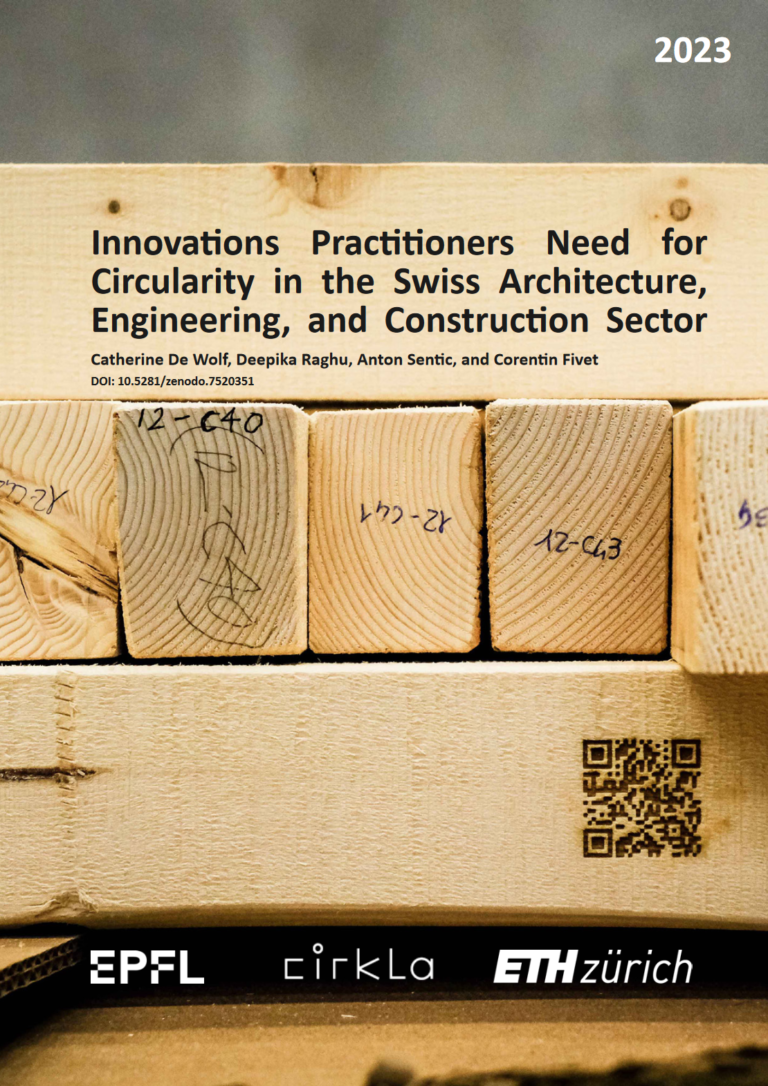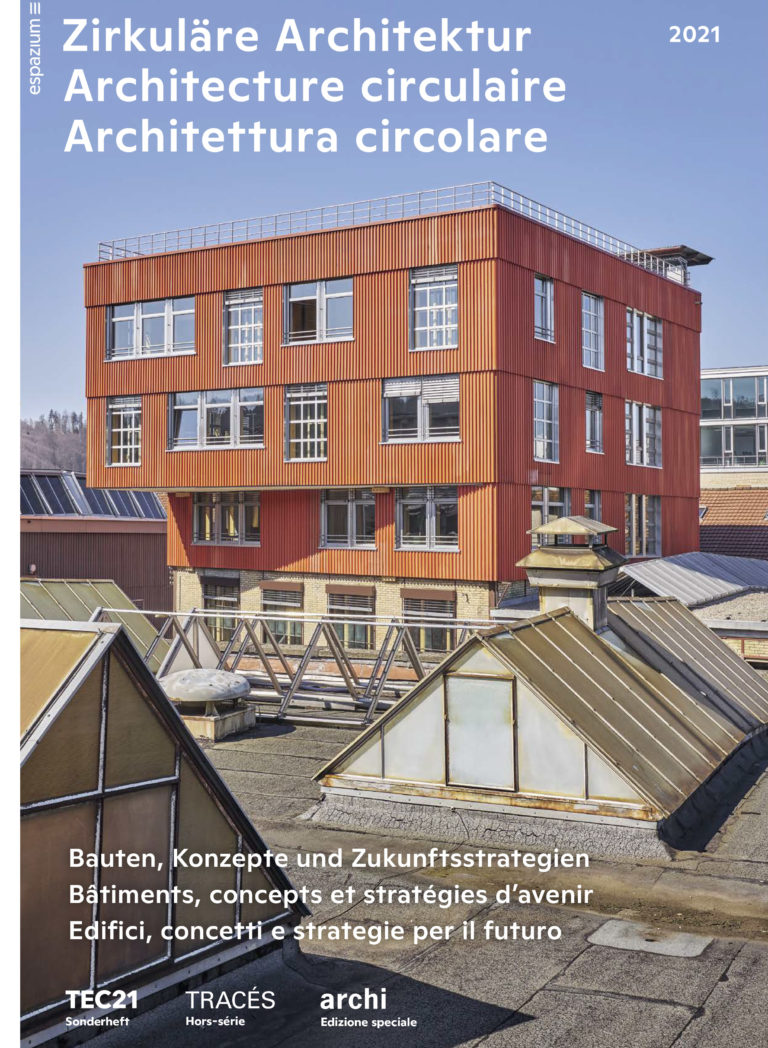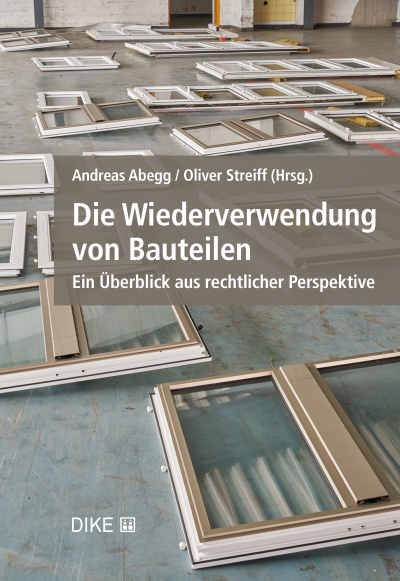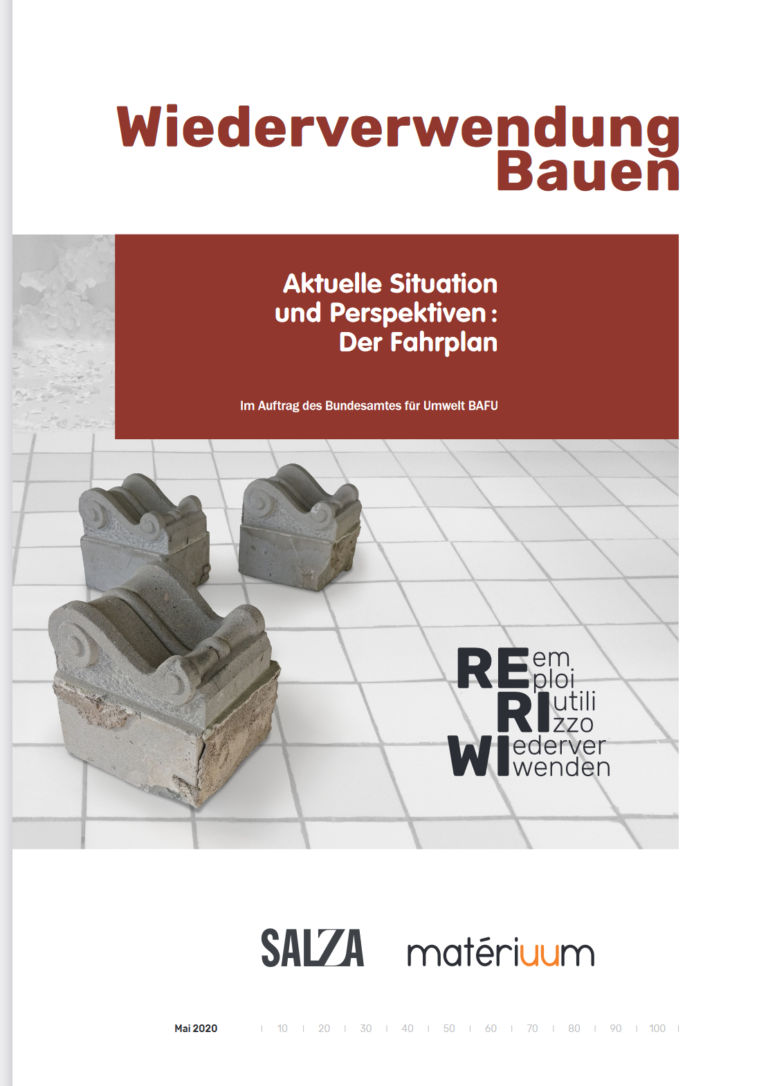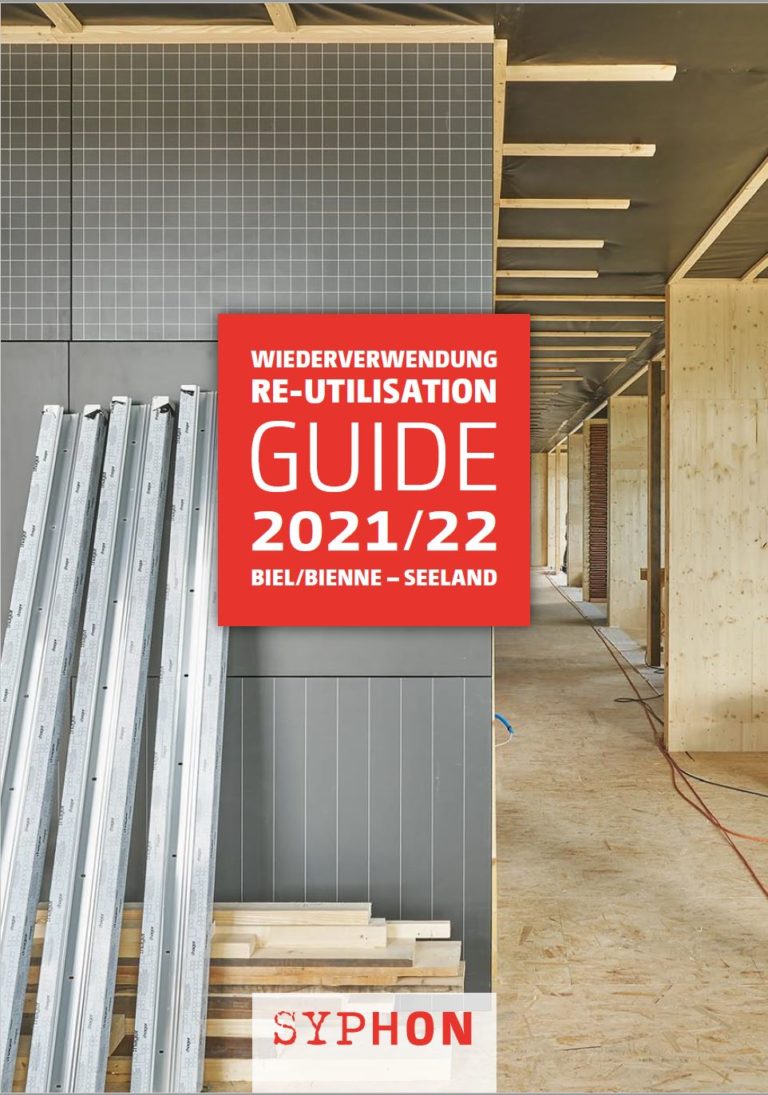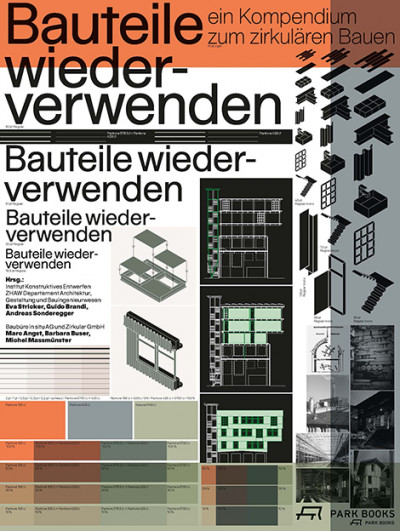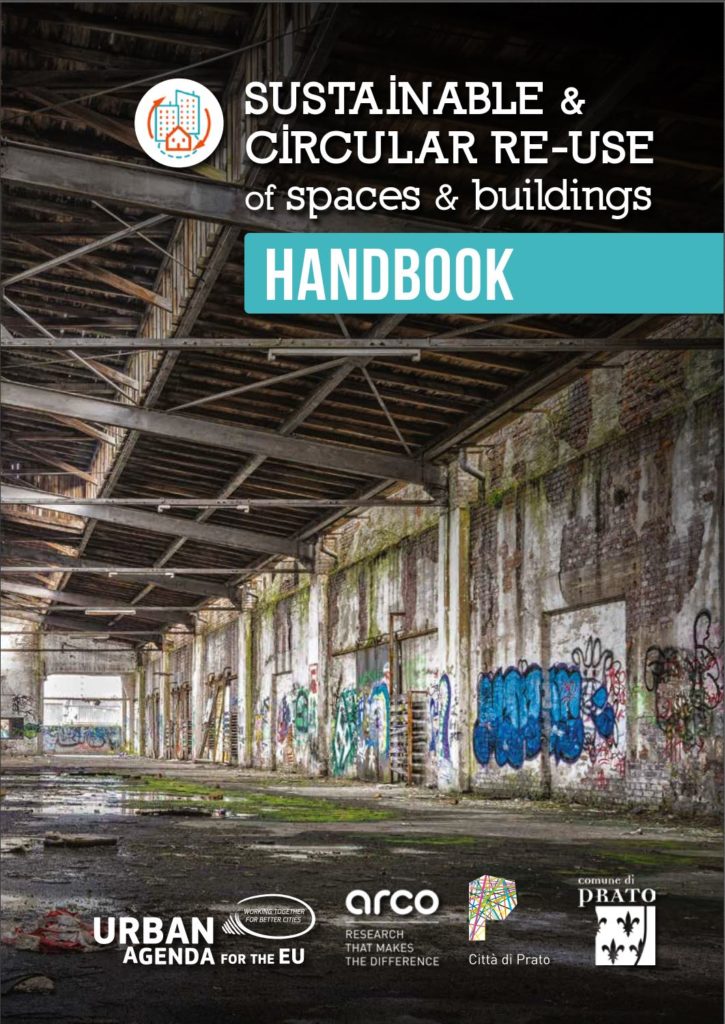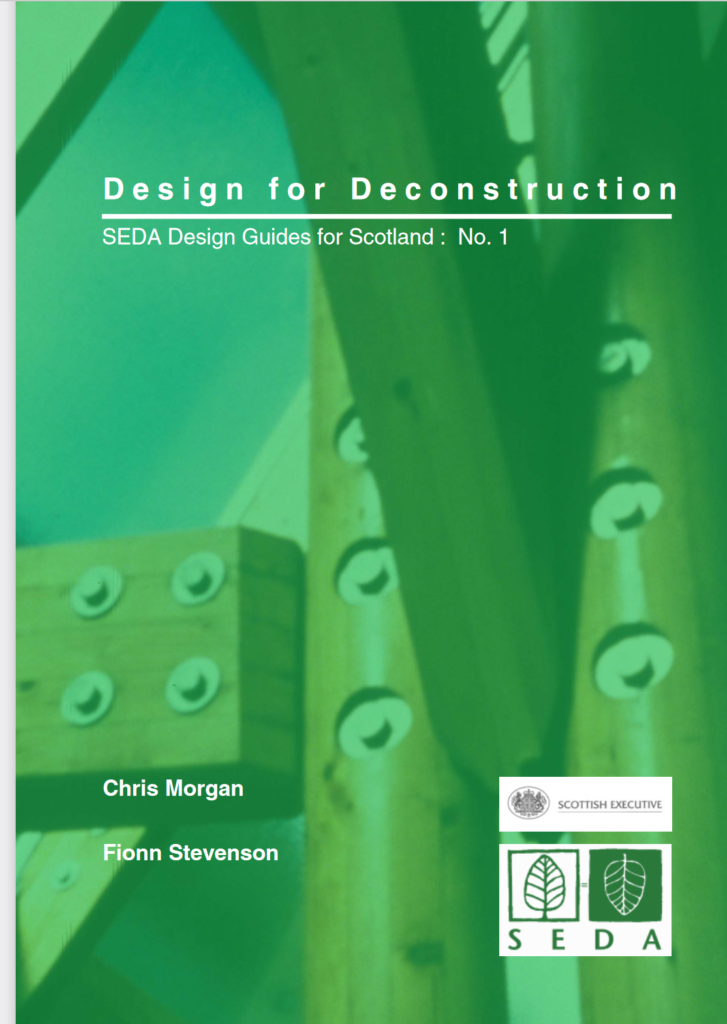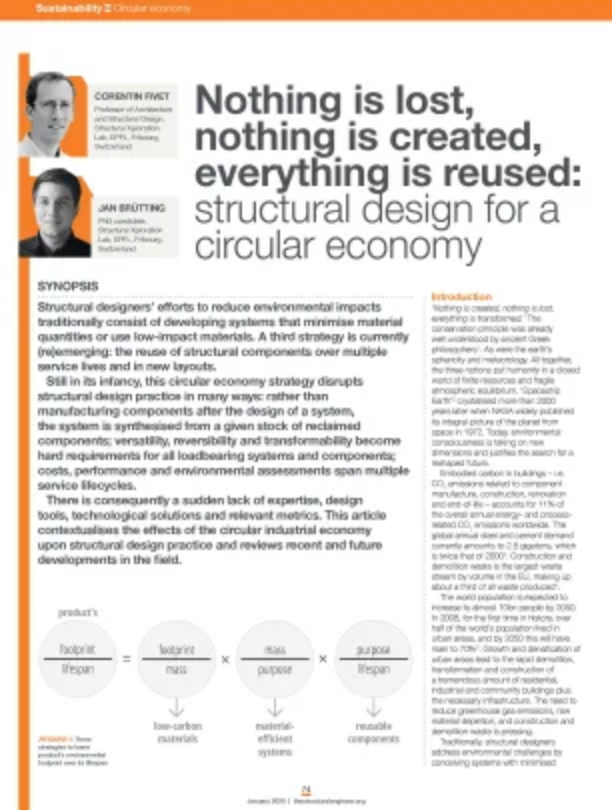
Publications
Swiss publications
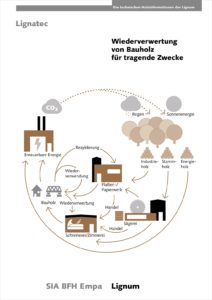
Lignatec Nr. 36- Wiederverwertung von Bauholz für tragende Zwecke
Autor: Gunther Ratsch, Lignum / Fachlektoren: Christoph Fuhrmann, dipl. Holzbau-Ing. HTL/SIA, BFH-AHB, Biel; Urs Luginbühl, dipl. Holzbau-Ing. HTL, Ingenieurbüro Luginbühl, Biel; René Steiger, Dr. sc. techn., dipl. Bau-Ing. ETH/SIA, Empa, Dübendorf (2023)
Sprache: Deutsch, Französisch
Die Wiederverwertung von Bauholz verlängert die Nutzungsdauer von Baustoffen und Bauteilen. Das schont Ressourcen und reduziert die Umweltauswirkungen aus der Neuproduktion. Die Lignum-Publikation orientiert über die kreislaufwirtschaftlichen Möglichkeiten von Vollholz und geklebten Vollholzprodukten im Bauwesen.
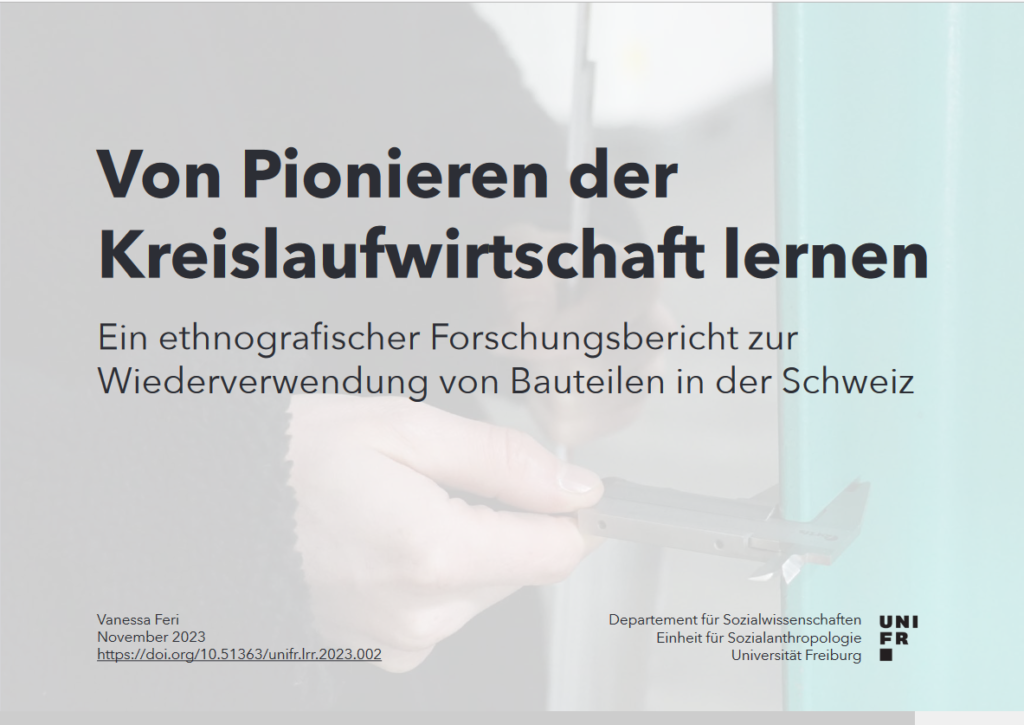
Learning from pioneers of the circular economy
Vanessa Feri (2023) Language: German
The research report "Learning from pioneers of the circular economy" provides insights into the reuse of building components. Experiences of stakeholders show that practical deconstruction experience has a transformative effect and creates an understanding of reversible construction. The report emphasizes the challenges and opportunities of reusing building materials, underlines the importance of early training and highlights cooperation between different stakeholders. Organizational aspects such as timing and storage space as well as new professional fields in the construction industry are outlined. The focus is on the variety of approaches and solutions that increase the value of existing materials.
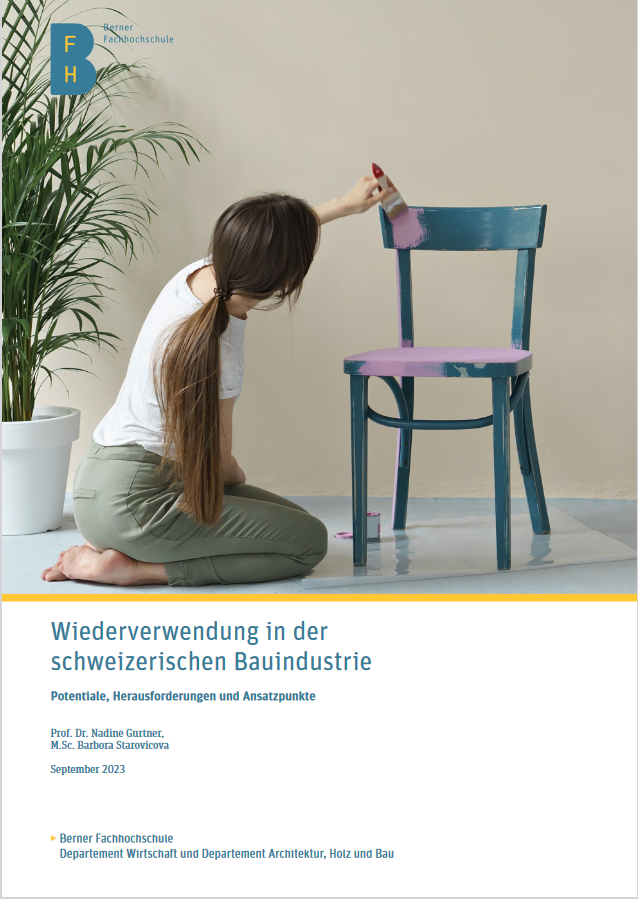
Reuse in the Swiss construction industry - potentials, challenges and starting points
Prof. Dr. Nadine Gurtner, M. Sc Barbora Starovicova (2023) Language: German
As part of a recent study, Bern University of Applied Sciences recorded the perspectives of the various players in the construction industry with regard to the reuse of building parts and components. The study shows: The construction industry's interest in the circular economy and the will to drive it forward are clearly noticeable. The potential is promising, but the challenges are also complex. The study summarizes the diverse current challenges of reusing building parts and components from the perspective of the stakeholders and structures the proposals for tackling them into a few key starting points.
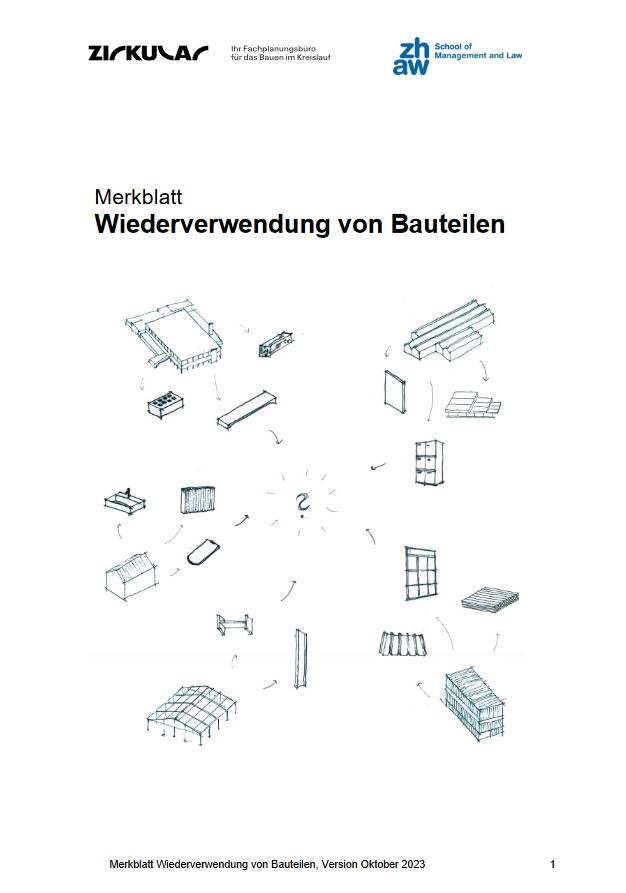
Note sheet - Reuse of components
Angst, M.; Feri,V; Oefner, A.; Ott, C.; Streiff, O.; Zoller-Eckenstein, A. (2023) Language: German
This leaflet "Reuse of building components" serves as a guide for construction professionals and clients and provides an important basis for circular construction projects. It brings together the knowledge gained from pioneering work on services and processes for the reuse of building components and explains the key legal aspects that need to be taken into account.
The fact sheet was created as part of the Innosuisse project no. 55734.1 IP-SBM "Reuse of building components: Legal Framework" in collaboration with Zirkular GmbH and the Zurich University of Applied Sciences ZHAW, School of Management and Law, Urban Planning and Environmental Law Department.
Innovations Practitioners Need for Circularity in the Swiss Architecture, Engineering, and Construction Sector
De Wolf, C.; Raghu, D.; Sentic, A.; Fivet, C. (2023) Language: English
This paper highlights practitioners’ needs for implementing circularity in the AEC sector in Switzerland, and how digital platforms could support it. We hosted two workshops with industry practitioners in the Swiss AEC sector to find out their needs from academia, government, and industry to implement such a shift.
Re-Use: Reuse of steel components
SZS (2021) Language: German / French
The new guide in the "steelaid" series of the Swiss Steel Construction Center SZS gives advice on what to consider when reusing steel components, structures, and constructions. The reuse of steel components or entire steel structures is an excellent option for the ecological optimization of steel structures.
Circular architecture
espazium (2021) Language: German / French / Italian
The booklet "Circular Architecture", produced on behalf of the Federal Office for the Environment, gives an impression of how diverse the topic of circular economy is. Among the published architectural examples, there are conversions - because of the conservation of gray energy, they are often the most sustainable solution - but also new buildings that show what circular architecture of the future must look like.
Selective deconstruction - deconstructable construction:
study to promote waste reduction and reuse in the construction industry.
Küpfer C., Fivet, C. (2021) Language: German, French
This collection is based on a literature review and 32 case studies and interviews with professionals and: ' summarizes the basic principles of both approaches; ' documents and shares field reports and best practices; ' provides technical references for contractors, designers, and clients; ' provides an up-to-date and detailed theoretical background and references for further development; ' outlines opportunities for further development and implementation for Swiss buildings.
The reuse of components: An overview from a legal perspective
Abegg, A., Streiff, O. (2021) Language: German
Whether demolition concrete is crushed into granules and used as the basis for recycled concrete, or whether entire windows are removed from a demolished object and installed in another building, makes a big difference from different perspectives. This anthology takes these different perspectives and elaborates on both the public law and private law frameworks for reuse of building components. In the process, open questions and the need for further research also become clear. The results provide not only lawyers, but also building owners and planners with a practice-oriented overview of the topic.
Reuse Construction, Current Situation and Prospects : The Roadmap
de Perrot, O., Massard-Friat (2020) Language: German, French
To investigate the potential of reusable construction elements, the Federal Office for the Environment commissioned a study from Salza GmbH and the Geneva-based construction elements company Matériuum. The result: reuse can find its place in the construction sector. The authors of the study suggest including reuse in vocational training programs and publicizing and documenting both architectural and design achievements in the field of reuse and corresponding construction projects. Policymakers should support and consolidate reuse in the construction sector. Finally, reuse service providers should be organized more efficiently.
Re-use / Re-utilisation Guide 2021/22, Biel/Bienne - Seeland
Syphon AG (2021) Language: German, French
This brochure is a kind of prototype, without any claim to completeness, but already with many practical suggestions. The first part of the brochure focuses on the reuse ofa second part expands the topic into all possible areas in the region of Biel - Seeland. region of Biel - Seeland and the third part is the annual report 2020 of the Bauteilbörse Syphon AG.
Building components reuse : a compendium on circular construction
Published by the Institute of Structural Design, ZHAW Department of Architecture, Design and Civil Engineering; Eva Stricker, Guido Brandi, Andreas Sonderegger; Baubüro in situ AG, Zirkular GmbH; Marc Angst, Barbara Buser, Michel Massmünster (2021) Language: German
This book offers a comprehensive compendium that explores in detail all the issues surrounding the reuse of building components. They are played out using a concrete example: the K 118 head building on Winterthur's Lagerplatz, the largest building in Switzerland to date that consists mainly of reused components. Since 2018, this unique pilot project has been evaluated within the framework of an interdisciplinary research project with regard to architectural-constructive, energetic, economic, procedural and legal issues. All the results are collected in this book and presented in a highly descriptive manner, both visually and in terms of content.
European publications
A guide for identifying the reuse potential of construction products (Belgium)
Deweerdt, M., (BBRI) & Mertens, M. (Brussels Environmnent) (2020) Language: English
This document provides guidelines for conducting a reclamation audit.
A reclamation audit is a measure carried out in buildings that are scheduled for partial or total demolition. It aims to identify the building materials and products that have a high potential for reuse. The result of this audit is a "rehabilitation inventory" that lists the identified reusable building elements. The resulting inventories contain information on the characteristics of the materials and products, such as dimensions, quantities, conditions, environmental impact, technical characteristics, disassembly recommendations, etc. This manual presents a method for conducting these audits. It is intended for construction professionals and all stakeholders involved in the (de)construction process: owners, contractors, architects and engineers, etc.
Sustainable & Circular Re-Use of Spaces and Buildings Handbook
Urban Agenda Partnership, Funded by the European Commission (2019) Language: English, Italian
This handbook can be a useful tool to lay the foundation for an overall strategy Strategy to create a new model of urban reuse according to the principles of the circular economy. The book is intended to serve as a stimulus and incentive for strategic planning at the city level, carried out in particular by public authorities, but also supported by the regional and national levels. Through a comprehensive overview and analysis of best practices for urban reuse provided by the handbook, cities can learn about the different solutions that can be adopted, taking into account their urban characteristics. The approach could be bottom-up or, conversely, top-down, using different governance models to address specific situations.
Design for Deconstruction : SEDA Design Guides for Scotland No 1
Morgan, C., Stevenson, F. SEDA (2005) Language: English
Planning details for deconstruction at the beginning of a project allows one building to serve as a resource for the next at the end of its useful life and helps close the loop on resource use. The general guide focuses on the idea of practical reuse and should be read in conjunction with other guides on sustainable design, deconstruction, and recycling to provide a comprehensive design framework. The details provided have been fully costed, tested, and deficiency tested. They are offered as viable alternatives to standard details and illustrate reuse options.
Scientific publications
Fivet, C., Brütting, J. Nothing is lost, nothing is created, is reused structural design for a circular economy The Structural Engineer, vol. 98(1), p. 74-81, 2020.
This circular economy strategy, still in its infancy, represents a break in building design practice in many ways: Instead of manufacturing components as a system is designed, the system is synthesized from a specific inventory of reused components; versatility, reversibility, and transformability become hard requirements for all load-bearing systems and components; cost, performance, and environmental assessments span multiple life cycles. As a result, there is a sudden shortage of expertise, design tools, technological solutions, and relevant metrics. This article contextualizes the impact of the industrial circular economy on building design practice and reviews recent and future developments in the field.

